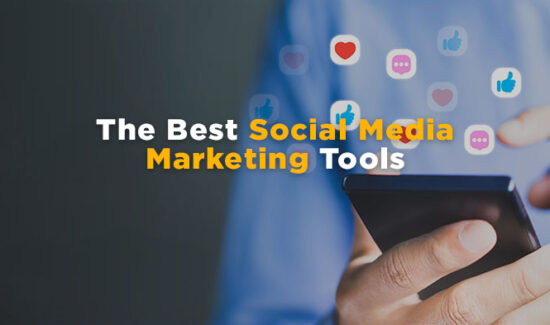Voice Control for ChatGPT: What Does it Mean for B2C Websites?


As part of Solutions Review’s Contributed Content Series—a collection of articles written by industry thought leaders in maturing software categories—Pini Yakuel, the co-founder and CEO of Optimove, delves into the effects voice control for ChatGPT and voice-as-search can have on B2C websites.
The most successful retailers empower customers to choose when and where to shop, especially as more people shop on mobile devices. From mobile-optimized B2C websites to more advanced native apps, brands continuously seek to improve the customer experience. Simply put, the best brands start with the customer to customize the shopping experience. And more and more consumers expect it.
With a new plugin, ChatGPT has now been given a voice, empowering users to communicate through typing or speaking. With that in mind, it’s only a matter of time before consumers demand a voice-as-a-search option for online shopping. But what will that mean for B2C websites and businesses?
Smart Search is the Trend
Today, people’s expectations are high. They are already using smart search to pinpoint exactly what they want (e.g., “Scott’s Turf Builder”) or options of items (“lawn fertilizer”) to choose from using intelligent search with new technologies. They want the same power and ease of use on a brand’s site. New technology enables standalone solutions on digital-experience platforms that manage a customer’s experience across any digital touchpoint, including mobile apps, B2C websites, and channels, providing better customer satisfaction.
Brands can now deliver a symmetric, end-to-end customer experience with higher conversion rates and lifetime value.
Personalizing the Consumer’s Web Experience
By leveraging this technology, brands can deliver personalized app and B2C website experiences from the very first customer interaction and continually improve these experiences with each ongoing interaction. With access to over 20 machine learning (ML) models, marketers can deepen the customer’s personal experience and make instantaneous recommendations based on previous purchases.
Additionally, brands can embed an AI-powered search engine on their commerce site, instantly fixing typos, assisting visitors with search terms, and even comprehending indigenous slang. For example, if someone searches for ‘Lakers’ on a sporting goods website, they’ll likely receive results for Laker jerseys for LeBron alongside jerseys he wore for the Cavaliers and Heat.
Information derived from customer interaction can be integrated as an additional data source, enhancing a company’s segmentation strategy and bringing personalization to the next level.
Consumers Will Expect Speech for Search
More and more consumers are in the habit of using voice for requests. As of 2021, a survey by Statista revealed 35 percent of iPhone users in the United States use Siri regularly. Another report, this one by Consumer Intelligence Research Partners (CIRP), estimated that there were around 126 million Alexa-enabled devices in the United States, and approximately 35 percent of U.S. households have at least one Alexa-enabled device.
A 2020 report by Voicebot.ai also confirmed 41 percent of U.S. adults use Google Assistant on their smartphones, smart speakers, or other devices. Marketers will be expected to provide a search voice option for customers. Just like consumers want the choice of the channel they use for shopping and communication, they will also demand the option of speaking or typing.
Recent research from ReadyCloud calls speech technology “a game-changer for e-commerce businesses. Overlooking the statistics on voice shopping for e-commerce can mean losing a lucrative opportunity.” That is particularly the case with the lucrative 25-49-year-old age group, which is the primary user of the technology, followed closely by the 18-24-year-old age group.
The move to speech-enabled services continues to grow across industries. The use of speech technology increased significantly in retail last year. According to a Vixen Labs survey, about 20 percent of U.S. adults use speech technology daily when shopping. The actual uses vary. More than half of survey respondents (54 percent) said they use speech-activated searches in the retail sector, up from 44 percent in the previous year’s study.
Consumers Will Choose the Best Communication Method
For consumers, the context of the interaction matters. Consider this, if a shopper has a simple request such as, “I want to see white blouses,” typing may be efficient. Typing is accessible for quick, straightforward answers. However, typing can become tedious when a conversation becomes more complex and the shopper asks about differences between brands, fit, and more. A conversation is more helpful and expeditious.
Brands that don’t give the choice of speaking or typing will not be preferred. Further, some people are better serviced via voice, including those who are blind and those who cannot type due to physical disabilities such as paralysis or arthritis. Voice technology may eventually become a government requirement—in America, it could become part of the Americans with Disabilities Act (ADA).
More Speech Capabilities Coming Soon
A recent eMarketer report expects speech-enabled e-commerce to become more prevalent as voice control for ChatGPT, alongside other AI tools, becomes more embedded in e-commerce and other industries. Generative AI enables retailers to make responses more personable, improving the customer experience. Voice control for ChatGPT and other emerging AI developments are garnering attention throughout retail and other industries as technologists, business experts, and consumers are just starting to scratch the surface of what they can accomplish with the technology. Consumers expect the frictionless service they receive from tech giants like Amazon and Netflix. Type or talk to get answers? Consumers should be empowered with that choice.























